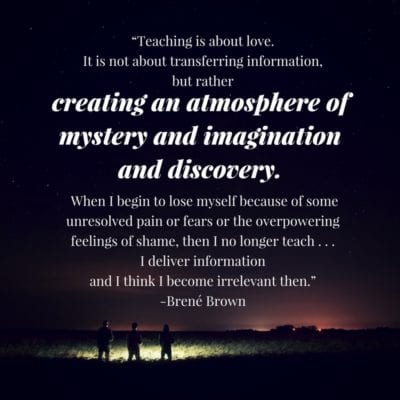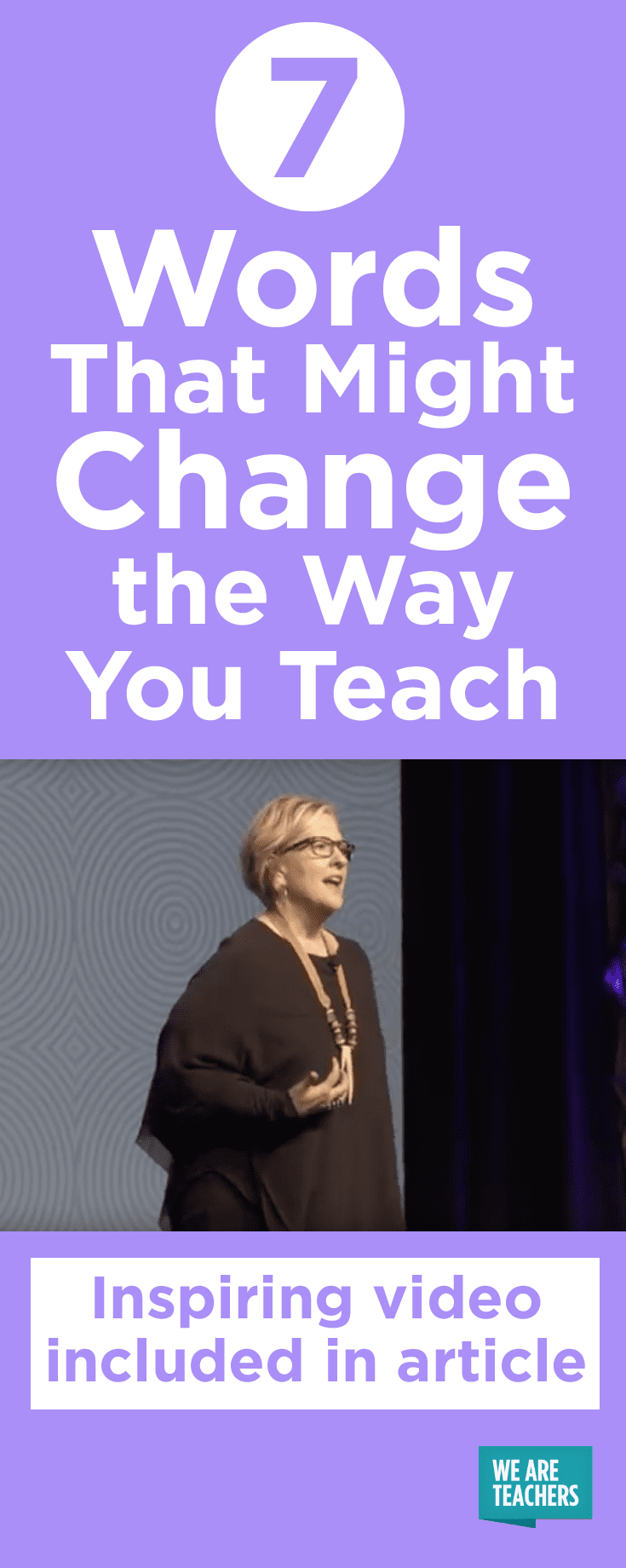Researcher Brené Brown has spent her life studying shame and vulnerability, with all their facets. You might have heard of her from her famous TED Talk, “The Power of Vulnerability.” She recently spoke to a group of educators about how to facilitate Daring Classrooms.
With these seven words she defines about in her speech, you can begin to understand how to work towards a Daring Classroom yourself.
Vulnerability
Vulnerability is “uncertainty, risk, and emotional exposure.”
It opens us up to pain and tragedy. But it also opens us up to love, joy, and connection, among many of the other feelings that make life worth living; feelings that we strive for everyday. And learning is inherently vulnerable: “It’s like you have a classroom filled with turtles without shells.”
Encouraging vulnerability in the classroom or in life is not synonymous with “coddling.” Quite the opposite, actually. It means inviting students to open themselves up, abandon their comfort, and learn in a more personal and intentional way. So, what does it take to invite vulnerability?
Courage
According to the Oxford English Dictionary, courage is defined as, “The ability to do something that frightens one.” However, the original definition of courage is “To tell the story of yourself with your whole heart.”
The classroom may be in the only place in your students’ lives where they can feel comfortable enough to be courageous. According to Brown, courage can be taught (yes, taught) and developed if these four pillars are present:
- Vulnerability
- Clarity of Values
- Trust
- Rising Skills (The ability to get back up when we fall)
[contextly_sidebar id=”5csaVz22qS4Z4iJ5VP5Kqm2TFsC7IZJY”]
Shame v. Guilt
Shame is “the intensely painful belief that there is something about us that makes us unworthy of love and belonging.”
85% of the people Brené Brown interviewed could remember a shaming incident at school that was so devastating that it forever changed how they thought of themselves as learners. Perhaps even more eye-opening: “Through about fifth grade, shame is literally the threat of being unlovable. It is trauma because they are dependent. Shame is a threat to survival.”
It is the great betrayal of vulnerability. Shame is not, however, the same as guilt. “Shame is a focus on self, guilt is a focus on behavior. Guilt: ‘I’m sorry. I made a mistake.’ Shame: ‘I’m sorry. I am a mistake.'”
A simple change in wording can allow you to more accurately (and positively) express how you view your students and, in turn, better shape how your students view and treat themselves and each other.
Humiliation and Embarrassment
Humiliation is the feeling that you deserve the bad treatment someone puts you through because you believe they are right. Embarrassment is the feeling that you did not deserve however you were treated, regardless of what you’ve done.
The real example that Brené Brown gave was heartbreaking:
“Susie is sitting in her classroom as her teacher is passing out papers. The teacher says, ‘I have one paper left. Who didn’t get a paper?’ Silence from the class. And, with more emphasis the teacher says, ‘I SAID, I have one paper left. Who didn’t get a paper?’ Susie slowly raises her hand. The teacher comes over and says, ‘I’m not surprised. Class are you surprised? Here Susie, I’ll help you out.” And, then the teacher proceeds to write on her paper where the student’s name would go: STUPID.”
Whether it’s humiliation or embarrassment comes down to Susie’s response. If she believes her teacher, then she is humiliated; “She’s right. I am stupid.” If she believes her teacher is being a jerk, then it’s embarrassment. “Obviously my teacher either woke up on the wrong side of the bed!”
With this, it is important to be mindful of how we make students feel when we talk to them. Belittling students will not make them grow; it will make them resent you, at best.
Embarrassment, according to Brown, is felt when you know you can connect with others in the midst of a difficult situation, reminded that you are not alone. Shame requires that you feel hopeless and alone.
Empathy
“Empathy is… communicating that incredibly healing message of, ‘You are not alone.'”
Ensuring students never feel that they are alone requires an immense amount of vulnerability on the part of the teacher. You must be willing to be uncomfortable and vulnerable, connecting with your students instead of leaving them to dry out in the heat of their circumstance all by themselves.
Brené Brown states that, “The number one exacerbator of shame in a conversation is empathic failure.” Empathic failure is responding to vulnerability with “You’re fine!” instead of, “Tell me why this was so painful.” This affirmation, meeting the student where they are and walking with them through their difficulties, can be transformative not only for them, but for you.
If you want to learn more about Dr. Brene Brown, her work, and how it could transform your life, I highly recommend her book Daring Greatly: How the Courage to Be Vulnerable Transforms the Way We Live, Love, Parent, and Lead.



